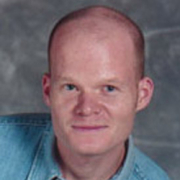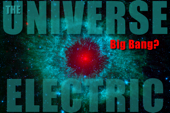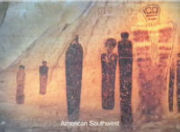Big Brains Tell Really Big Lies
07/09/08
According to a
recent story in the NY Times' International Herald Tribune, more Americans
than ever may be suffering from a neurological malfunction known as "source
amnesia." Our brains, through their complex, multi-layered processes of
memory retrieval, can distort information in such a way that makes it impossible
to remember whether a statement one has heard is true or false. Opinions, rumors,
and outright lies can easily be "misremembered" as truths, particularly
when they are heard repeatedly, or leave a strong emotional imprint.
The report reads:
Even when a lie is presented with a disclaimer, people often later remember it
as true. With time, this misremembering gets worse. A false statement from a
noncredible source that is at first not believed can gain credibility during
the months it takes to reprocess memories from short-term hippocampal storage
to longer-term cortical storage. As the source is forgotten, the message and
its implications gain strength.
Of course, in the Internet era, rumors can be spread with unprecedented rapidity.
Now more than ever, we witness the truth of Mark Twain's observation, "A
lie can travel halfway around the world while the truth is putting on its shoes.
" This truism is now supported by scientific evidence, as the Times'
authors report:
In one study, a group of Stanford students was exposed repeatedly to an
unsubstantiated claim taken from a Web site that Coca-Cola is an effective
paint thinner. Students who read the statement five times were nearly one-third
more likely than those who read it only twice to attribute it to Consumer Reports
(rather than The National Enquirer, their other choice), giving it a gloss of
credibility.
Making matters even worse, according to this report, "We tend to remember
news that accords with our worldview, and discount statements that contradict it.
" In other words, it's often not enough for one to simply be exposed to
the "truth," because the brain will actually fight to defend its attachment
to cherished falsehoods.
One might assume based on these observations that only the least educated among us
are prone to distorted memories and incorrect beliefs. However, this assumption is
based on another assumption -- that education invariably overcomes error, and no
misinformation is promulgated in schools. In reality, many of the "facts"
taught in schools -- even and perhaps especially at the University level -- are not
facts at all, but popular theories that have erroneously been codified into "
facts" through sheer repetition. Many textbooks make little or no attempt to
distinguish fact from theory, failing to cite doubts or alternatives offered by
reputable experts (or even acknowledging that a legitimate alternative view is
possible). Nor is the full historical background presented of a theory's evolution
over time -- including all of the original theory's predictive failures -- nor is
all of the evidence presented that might falsify a popular theory masquerading as
"fact." All of the above severely taints the "learning" process
for students and may reduce it to little more than sophisticated brainwashing.
Today's scientific myths can often work in pernicious serendipity with
institutionalized funding cycles. Textbooks and theories and institutional claims
depend on "consensus" of peers. All too frequently that requirement is
met by a sleight of hand, through what has been called "science by news
release." Educational media and scientific institutions know very well that
their funding requires a public sense of confidence. The illusion of a scientific
consensus starts as nothing more than a self-fulfilling prophecy. Soon the "
really big lie" finds its most effective ally: "Don't rock the boat."
Academia's intellectual inflexibility and highly political nature have been enumerated
ad nauseam on these pages for the past five years. Recently, Stephen J. Crothers
penned a
devastating indictment of the black hole theory, providing numerous citations that
demonstrate "a deliberate suppression of important scientific papers by the
community of physicists and astronomers concerning the black hole... "
Crothers writes:
The black hole has no foundation in theory whatsoever. Neither Newton's theory nor
Einstein's theory predict it. In fact, both theories preclude it, contrary to what
the orthodox relativists claim.
The so-called 'Schwarzschild' solution is not due to Karl Schwarzschild at all.
The experts have either not read Schwarzschild's 1916 memoir or have otherwise
ignored it....The so-called "Schwarzschild" solution is due to David
Hilbert, itself a corruption of a solution first derived by Johannes Droste in
May 1916, whose paper has also been buried or ignored at the convenience of the
experts. It appears that the experts have not read Hilbert either....Schwarzschild's
solution has no black hole, and neither does Droste's solution....
But since most astronomers and astrophysicists will tell you that black holes are
real, and since we read about "black holes" performing increasingly exotic
feats on an almost weekly basis (including "
roaming black holes," "
colliding black holes," "
mini-black holes," and even "
stringy fuzzball" black holes), is it even possible that the world's elite
space scientists could be so misguided on such a fundamental issue?
To answer this question, we need to first understand what scientists actually mean
when they claim to "see" a black hole. Long before anyone began speculating
about "dark matter" and "dark energy" (invisible and undetectable
entities which we are told make up 96% of the Universe) astrophysicists observed that
galactic cores exhibit vastly more concentrated energetic activity than could be
achieved by gravity alone, unless something hugely massive (yet incredibly small) were
present. So they effectively "divided by zero." They employed the near zero
force of gravity, which requires a nearly "infinite" compression of matter --
the only thing they could imagine under their theoretical assumptions (which rely
exclusively on a gravity-centric model). It's no longer physics; it is a bizarre
mathematical conjecture. They called these speculative, monstrous concentrations of
matter "black holes," imagining that they "consume everything around
them."
As technology improved, the original black hole theoretical model was quickly falsified
by the observed ejection of vast quantities of matter in thin jets. Suddenly, the
theorists imagined that an "accretion disk" and magnetic field (which they
claim can exist with no contribution from electric currents) could produce a
narrowly-confined jet across millions of light years. "Accretion disks" are
spoken of as facts, rather than what they are -- a post hoc invention needed to save a
falsified theory.
Today's astronomers and physicists are trained to accept on faith the validity of
terms that have no meaning in the real world: "warped space," "
space-time," "fabric of space-time," "parallel universes."
Not only is the "physics" of the black hole -- a nearly infinite compression
of matter -- impossible, it was never a necessary speculation in the first place. As
repeatedly discussed on these pages, the high-energy cosmic events -- including
stupendous outbursts of synchrotron radiation -- and galactic motions attributed to
black holes are the experimentally demonstrated effects of high-energy plasma discharge.
But modern astronomers and astrophysicists receive little or no training in experimental
plasma science and electric discharge. The language of plasma physicists, including such
terms such as "double-layers," "Birkeland currents," and "
z-pinches" -- has never been a part of the mainstream astronomer's lexicon. But the
fact remains that electrical activity is abundant throughout the cosmos, and attempts to
explain the phenomena with an archaic, mechanical language of wind and water and "
hot gas" have persisted into the 21st century. Energetic plasma discharge can never
be properly described through such language.
The space age has been marked by endless surprises. But equally telling has been
astronomers' reactions, which reveal the very "source amnesia" described in
the Times' piece. No matter how throughly the accepted models may have been contradicted,
and irrespective of the scientists' vow to "rethink" matters and "go back
to the drawing board," the earlier assumptions persist, while the door remains closed
to new possibilities. This seems to confirm the observation of the Times' authors, that
"We tend to remember news that accords with our worldview, and discount statements
that contradict it. "
Consider astronomers' reaction to the unanticipated, "amazing" outburst of Comet
17P Holmes in October of 2007. In less than 24 hours, the comet flared up from a magnitude
of 17 to a magnitude of 2.5 -- making it visible to the naked eye on Earth. Holmes' coma
(head) expanded from 28,000 km until, by mid-November, it was an incredible 7,000,000 km,
making it "the largest object in the solar system," even larger than the Sun.
Astronomers could not explain this stupendous display, particularly since at the time of
its flare-up, the comet was moving AWAY from the Sun. The website
skyandtelescope.com called it "the
weirdest new object to appear in the sky in memory. "; "This is truly a
celestial surprise"..."Absolutely amazing ", said Paul Lewis, director
of astronomy outreach at the University of Tennessee.
But space scientists' bafflement over Holmes has not led to any public acknowledgments
that the standard comet model is in trouble but rather to near-total SILENCE. As
Thunderblog contributor Scott Wall points out in his piece, "
Comet Holmes -- a Media Non-event":
You might think that this remarkable behaviour would be big news, particularly among
astronomers. A prominent Astronomy magazine recently published their top ten news
stories of 2007. Surprisingly, this spectacular comet was not named as the top story.
It didn't even finish in the top ten. In fact, the entire magazine completely ignored
the comet. There was not even an editorial comment. Additionally, there was little
if any newspaper or TV coverage....
From the electrical perspective, comets are electrically charged bodies that acquire
a negative charge in their time at the farther researches of the solar system.
Outbursts from comets at great distances from the Sun might logically correlate with
sudden changes in the solar "wind" plasma environment due to a solar storm.
As Wallace Thornhill explained, "The point about sudden comet outbursts is that
we are dealing with a sudden, discontinuous process of plasma discharge - a switch from
dark current mode to normal glow mode. It is a complex surface phenomenon that cannot
be predicted. The best we can do is to say that the passage of a sudden change in the
solar wind is the most likely time to see a flare-up. "
As pointed out to the Thunderbolts group by independent researcher Michael Mozina,
there was a large spike in the density of the solar wind on October 22 at 19:15, two
days before the comet's flare up. This data could prove invaluable to NASA and
cometologists around the world, if only all things "electrical" were not
verboten in the astronomical mainstream.
It's not as though Holmes was the first comet to upset the apple cart for the "
dirty snowball" model proposed by Fred Whipple more than 50 years ago. The
countless enduring comet "mysteries," repeatedly enumerated on this website,
include:
-
highly energetic
supersonic jets exploding from comets' nuclei;
-
the inexplicable confinement of these
jets into narrow filaments, spanning great distances, up to MILLIONS of miles,
defying the behavior of neutral gases in a vacuum;
-
jets occurring on the
dark sides of comet nuclei;
-
comet surfaces with
sharply carved relief -- the exact opposite of what astronomers expected
under the "dirty snowball" model;
-
unexpectedly
high temperatures and X-ray emissions from cometary comas;
-
a short supply or complete
absence of water and other volatiles on comets' nuclei;
-
mounting evidence for the production of the
OH radical in cometary comas, due to charge exchange with the Sun
(the process that misled astronomers into thinking they were seeing evidence
of water removed from the surface);
-
mineral particles that can only be formed under
extremely high temperatures -- the last thing one would expect from a
chunk of dirty ice arriving from the outermost reaches of the solar system;
-
comets
flaring up while in "deep freeze," beyond the orbit of Saturn;
-
comets
disintegrating many millions of miles from the Sun;
-
comet dust particles more finely and evenly divided than is plausible
for sublimating "dirty ices";
-
ejection of
larger particles and "gravel" that was never anticipated under
the idea that comets accreted from primordial clouds of ice, gas, and dust;
-
the unexplained ability of a relatively minuscule comet nucleus to
hold in place a highly spherical
coma, up to millions of miles in diameter, against the force of the
solar wind.
This last point, on its own, should be enough incentive for astrophysicists
to re-think their gravity-centric models.
Of course, as we've pointed out many times before, the predictive strength of
the electric comet model has only improved with each new discovery. The successful
predictions of Wallace Thornhill prior to the 2005 Deep Impact mission alone should
have warranted serious interest from NASA investigators. But when the
Wired.com news service asked NASA officials to comment on Thornhill's predictions,
they declined, and no evidence exists that NASA has reconsidered their underlying
assumptions about comets.
The term "crisis in cosmology"
is now being spoken increasingly by scientists around the world. But each year, the
collective madness only seems to intensify, as scientists' "source amnesia"
leads them further and further down the rabbit hole toward unmitigated fantasy. To
see just how little regard standard cosmologists now seem to have for empirical reality,
one need look no further than the recent NY Times "science" headline, "
Big Brain Theory: Have Cosmologists Lost Theirs?" According to the
cosmologists cited in the article -- which features a staggering overabundance of
standard and quasi-standard quantum speculations about "spacetime," "
parallel universes," and multiple "big bangs" -- the bottom line is
that "you yourself reading this article are more likely to be some momentary
fluctuation in a field of matter and energy out in space than a person with a real past
born through billions of years of evolution in an orderly star-spangled cosmos. Your
memories and the world you think you see around you are illusions. "
If you think the above is an absurd, grotesque, and frankly misanthropic fantasy
unworthy of your attention, the Times author does little to increase your confidence
with the following declaration: "Nobody in the field believes that this is
the way things really work, however. "
Ironically, this piece began by referencing an article from this very same news
organization, which warns the reader about the brain's inability to distinguish
facts from unsubstantiated claims. It seems that a high IQ is not a reliable
defense against the unfortunate problems of "source amnesia" and
selective perception that clearly plague so many of today's astronomers,
physicists, and mathematicians. This is at a great cost to John Q. Public in
terms both financial (tax dollars totaling in the BILLIONS) and intellectual,
and constitutes nothing less than a fundamental betrayal of the public trust.
Michael Goodspeed
Permalink to this article.
Public comment may be made on this article on the
Thunderbolts Forum/Thunderblogs (free membership required).
For a highly-acclaimed 60-minute video introduction to the Electric Universe, see
Thunderbolts of the Gods on Google Video.
|

Michael Goodspeed is a freelance journalist who lives in Beaverton, Oregon
My Archives
Chronological Archives
Archives by Author
Archives by Subject
Thunderblogs home
|




